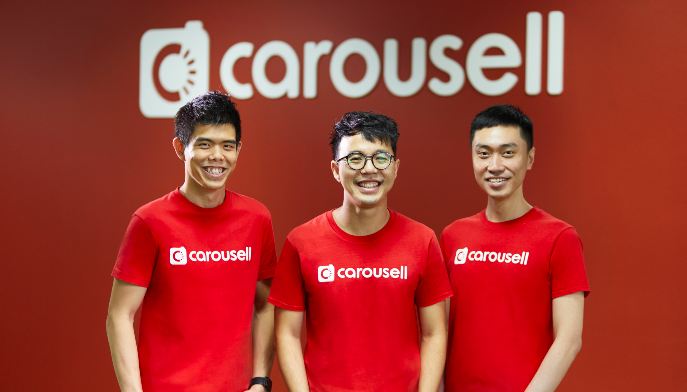
Carousell co-founders
Singapore’s leading online classifieds company Carousell is mulling public listing in the US via merger with a special purpose acquisition company (SPAC), says a Bloomberg report, citing undisclosed sources.
The transaction could value the tech company at about US$1.5 billion, the report added. It is already working with an adviser on the potential deal.
Also Read: Carousell inches closer to unicorn status with a US$80M investment round led by Naver
The listing could occur as soon as the end of this year.
Launched in August 2012, Carousell began in Singapore and now has a presence in eight markets across Asia. As of last September, the firm is said to have over 250 million listings across Southeast Asia, Taiwan and Hong Kong.
The marketplace has a diverse range of products across a variety of categories, including cars, lifestyle, gadgets and fashion accessories. It also owns and operates Cho Tot (Vietnam), Mudah (Malaysia), OneKyat (Myanmar), and Revo Financial (Singapore).
Since inception, Carousell has raised over US$260 million across several rounds of funding, including an US$80 million fundraise from a consortium of companies, and a US$56 million from OLX Group in April 2019. Carosell’s other investors include Telenor Group, Rakuten Ventures, Sequoia India and Naspers.
Also Read: Is everything hunky-dory with public listing via SPACs?
In 2019, it made a series of acquisitions to accelerate leadership in Malaysia, Vietnam and the Philippines, including 701Search, the classifieds firm owned by Norwegian telco Telenor Group, and OLX Philippines.
Of late, listing via a blank-cheque company or SPAC has caught the imagination of Southeast Asia’s startup industry. In the recent past, many companies have disclosed plans to list via SPAC merger. The list includes Grab, Malaysia’s Carsome, and Indonesia’s Tiket.com.
According to experts, SPAC listing in general does carry higher risk, but sometimes it can also generate a potential higher return if the company outperforms the prediction, similar to late-stage startup investing.
One of the differences between SPAC and traditional IPO is the baseline revenue that is used to value the company. In a traditional IPO, a company cannot use projections to justify its valuation, whereas SPAC allows a company to use projected revenue to justify a higher valuation.
Also Read: The hidden danger in SPACs. Is the hype worth the risk?
“Therefore, the risk/reward is tied to the projection versus the actual realised numbers. Also, the sponsors of a SPAC usually are able to obtain ownership at a discounted price when the SPAC makes an acquisition (this is called D-SPAC),” according to Carman Chan, founder and Managing Partner of Click Ventures.
—
Image Credit: Carousell
The post Carousell mulling US listing via SPAC merger at US$1.5B valuation: report appeared first on e27.

